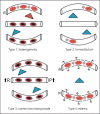Microcirculation: Physiology, Pathophysiology, and Clinical Application
- PMID: 31851980
- PMCID: PMC7114900
- DOI: 10.1159/000503775
Microcirculation: Physiology, Pathophysiology, and Clinical Application
Abstract
This paper briefly reviews the physiological components of the microcirculation, focusing on its function in homeostasis and its central function in the realization of oxygen transport to tissue cells. Its pivotal role in the understanding of circulatory compromise in states of shock and renal compromise is discussed. Our introduction of hand-held vital microscopes (HVM) to clinical medicine has revealed the importance of the microcirculation as a central target organ in states of critical illness and inadequate response to therapy. Technical and methodological developments have been made in hardware and in software including our recent introduction and validation of automatic analysis software called MicroTools, which now allows point-of-care use of HVM imaging at the bedside for instant availability of functional microcirculatory parameters needed for microcirculatory targeted resuscitation procedures to be a reality.
Keywords: Incident dark field imaging; Microcirculation; Sepsis; Shock; Sidestream dark field imaging; Tissue red blood cell perfusion.
The Author(s). Published by S. Karger AG, Basel.
Conflict of interest statement
C.I. has received grants and speaker fees from Fresenius Medical, Fresenius-Kabi, Cytosorbents, La Jolla Pharmaceutical Company, AM Pharma, Covidean, Baxter Health Care. Dr. Ince and his team provided services and training with regard to clinical microcirculation. To this purpose, he runs an internet site called
Figures



References
-
- Weinbaum S, Tarbell JM, Damiano ER. The structure and function of the endothelial glycocalyx layer. Annu Rev Biomed Eng. 2007;9((1)):121–67. - PubMed
-
- Guerci P, Ergin B, Uz Z, Ince Y, Westphal M, Heger M, et al. Glycocalyx Degradation Is Independent of Vascular Barrier Permeability Increase in Nontraumatic Hemorrhagic Shock in Rats. Anesth Analg. 2019 Aug;129((2)):598–607. - PubMed
Publication types
MeSH terms
LinkOut - more resources
Full Text Sources
Other Literature Sources
Medical

